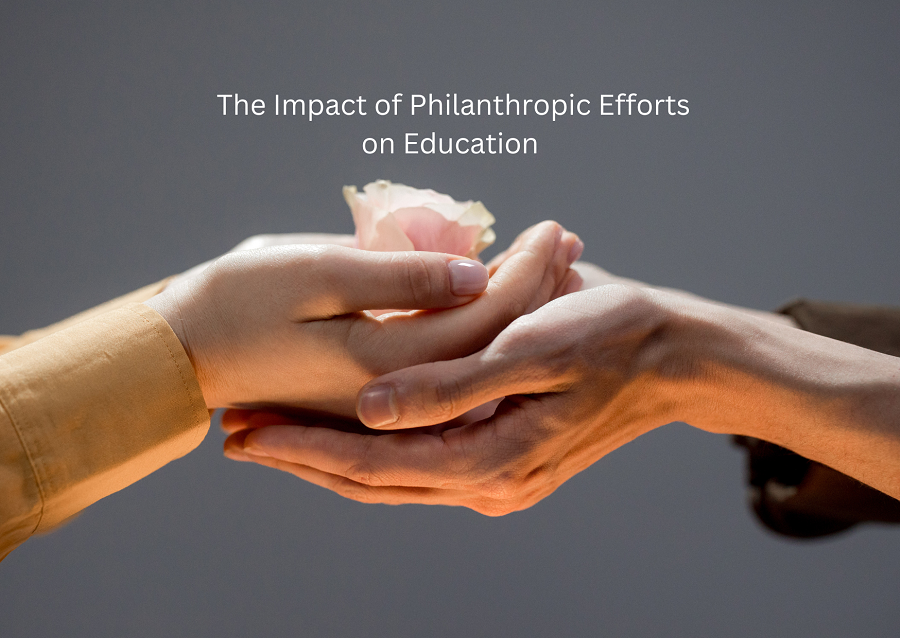Philanthropy has long played a critical role in shaping the landscape of education across the globe. From funding scholarships and building schools to supporting innovative teaching methods and providing necessary resources, philanthropic efforts have created significant opportunities for millions of students. This blog explores the multifaceted impact of these efforts on education, highlighting key initiatives, successes, and areas needing further attention.
1. Enhancing Access to Education
One of the most visible impacts of philanthropic efforts is the increased access to education for underserved populations. Organizations and individuals have provided financial support to build schools in rural and impoverished areas where government resources are limited. For example, the construction of schools in remote areas of Africa and Asia has allowed countless children to receive an education they otherwise would not have had access to.
Scholarship programs funded by philanthropic organizations also play a crucial role in increasing access. These programs help students from low-income families afford tuition, books, and other essential supplies. The Gates Millennium Scholars Program, funded by the Bill & Melinda Gates Foundation, is one prominent example, having supported over 20,000 students from minority backgrounds since its inception.
2. Supporting Innovative Teaching Methods
Philanthropy has been instrumental in promoting and supporting innovative teaching methods that enhance the quality of education. For instance, the Khan Academy, supported by various philanthropic entities, provides free, high-quality educational resources online. This platform has revolutionized the way students learn by offering personalized and accessible learning experiences.
Similarly, the MacArthur Foundation’s Digital Media and Learning Initiative explores how digital media can transform education. This initiative has funded research and projects that integrate technology into the classroom, fostering a more engaging and effective learning environment.
3. Providing Essential Resources
Many schools, especially those in underfunded areas, struggle with a lack of essential resources such as textbooks, laboratory equipment, and technological tools. Philanthropic organizations often step in to fill these gaps. DonorsChoose, an online platform where teachers can request funding for specific classroom needs, has raised millions of dollars to provide resources directly to classrooms in need. This model ensures that donations are used effectively and impactfully, addressing the immediate needs of educators and students.
4. Addressing Systemic Inequities
Philanthropy also aims to address systemic inequities in education. Organizations like the Kellogg Foundation focus on early childhood education, recognizing that early intervention is critical for long-term success. By funding programs that support early learning and development, these philanthropic efforts help to level the playing field for children from disadvantaged backgrounds.
Furthermore, initiatives like the Lumina Foundation’s Goal 2025 aim to increase the percentage of Americans with high-quality degrees and credentials to 60% by 2025. This goal emphasizes the importance of postsecondary education and the need to close achievement gaps among different demographic groups.
5. Promoting Global Education Initiatives
Philanthropic efforts are not confined to national borders; they also support global education initiatives. The Global Partnership for Education (GPE), a multi-stakeholder partnership and funding platform, aims to strengthen education systems in developing countries. With contributions from various governments, private sector entities, and philanthropic organizations, GPE has improved education outcomes for millions of children worldwide.
Challenges and Considerations
While the impact of philanthropic efforts on education is largely positive, there are challenges and considerations that must be addressed. One concern is the sustainability of funded programs. Philanthropic funding can be temporary, and without a long-term plan, successful initiatives may struggle to continue once the funding ends.
Another consideration is the potential for philanthropic efforts to influence education policy and priorities in ways that may not always align with public interest. Transparency and accountability are crucial to ensuring that philanthropic activities support equitable and effective education outcomes.
Conclusion
Philanthropic efforts have made a profound impact on education by increasing access, supporting innovation, providing essential resources, addressing systemic inequities, and promoting global initiatives. While challenges remain, the ongoing commitment of philanthropic organizations and individuals continues to create opportunities for students around the world. As these efforts evolve, it is essential to maintain a focus on sustainability, transparency, and equity to ensure that the benefits of philanthropy in education are both meaningful and lasting.
